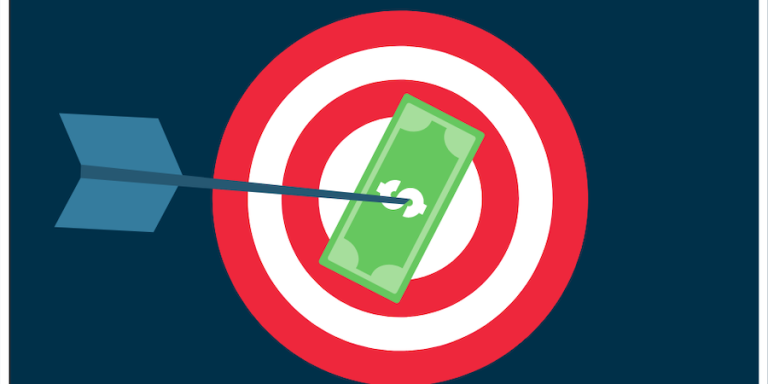Mortgage Rates -What is rate spread in mortgage
Mortgage charges have have risen in latest weeks, a transfer that may be contributed to the mixture of stubbornly resilient inflation, a still-strong U.S. financial system and a political showdown over the federal debt ceiling.
However there’s one other wrongdoer, too — one obvious solely to these aware of the inside workings of the mortgage market: the hole between 30-year mortgage charges and their closest proxy, the 10-year Treasury yield.
This interval, identified to economists as “the unfold,” sometimes runs between 1.5 and a pair of share factors. If the 10-year yield sits at 4 p.c, for instance, the 30-year charge ought to observe shut to six p.c.
Contemplate the week of Jan. 19, 2022. Then, the common charge on a 30-year mortgage was 3.75 p.c, in response to Bankrate’s nationwide survey of lenders. The ten-year Treasury, in the meantime, was yielding 1.83 p.c.
In different phrases, spreads had been completely regular.
Over the previous 12 months and a half, nevertheless, spreads have gotten wacky. As of Might 24, the common 30-year charge in Bankrate’s survey was 6.84 p.c, however the 10-year yield was simply 3.7 p.c. The hole had widened to three.14 share factors — or, in finance jargon, 314 foundation factors. That, in response to Bankrate information, was the best stage since 2009, when the worldwide financial system was in meltdown.
Why spreads are so excessive
The ten-year Treasury yield serves as a benchmark for 30-year mortgages as a result of each are long-term, low-risk types of debt. The ten-year Treasury is taken into account a super-safe funding, however yields can and do bounce round. Treasury charges plunge in instances of financial uncertainty — notably within the early months of the COVID pandemic — they usually rise when the financial outlook improves.
At this time, mortgage charge spreads are “abnormally excessive,” says Lawrence Yun, chief economist of the Nationwide Affiliation of Realtors.
The truth is, present spreads match or exceed these traditionally seen solely in instances of intense crises, akin to the worldwide monetary crash of 2009 and to start with of the pandemic.
In previous episodes of huge spreads, the rationale has been apparent. In late 2008 and early 2009, the housing bubble had simply burst, blue-chip Wall Avenue companies had been going bust and the worldwide financial system was teetering. Within the spring of 2020, the world was going into lockdown.
In each circumstances, lenders and traders had been afraid to tackle danger, and that worry translated to an additional charge to borrow.
At this time’s financial state of affairs is much totally different. Whereas a recession looms, few predict a calamitous crash, and the pandemic is essentially within the rearview.
“Spreads must be lots tighter, however they’re not, as a result of individuals are not sure concerning the future,” says L.D. Salmanson, CEO of Cherre, an actual property information agency.
One issue is that mortgage charges soared in a brief timeframe, and that form of fast change creates uncertainty. In mid-November 2021, the common charge on a 30-year mounted mortgage was simply 3.15 p.c, in response to Bankrate’s survey. By late October 2022, that quantity had soared to 7.12 p.c.
“Charge volatility is simply terribly excessive,” says Laurie Goodman, an economist and a fellow on the City Institute.
What does that must do with spreads? Contemplate this quirk of the mortgage market: Your lender guarantees you a charge weeks earlier than you really seal the deal. You lock in that charge at this time, though you in all probability received’t discover a house and shut on the mortgage for one more 4 to 6 weeks.
That hole creates a conundrum for the lender: If charges plunge within the coming weeks, you’ll merely ditch the mortgage for a greater deal. If charges soar, you’ll hold the mortgage and congratulate your self for locking in a charge that’s favorable to you and unfavorable to the lender.
One other, newer issue is the specter of tumult in monetary markets, as President Joe Biden and Home Republicans negotiate over the federal debt. The final federal debt showdown, in 2011, prompted spreads to widen, says Greg McBride, Bankrate’s chief monetary analyst.
“The debt ceiling brinksmanship — or worse — appears more likely to take what’s already an abnormally huge unfold and increase it additional,” says McBride.
Fewer patrons for mortgage bonds
Mortgage originators sometimes bundle their loans and promote them off to traders as mortgage-backed securities (MBS). Through the depths of the pandemic, the Federal Reserve stepped in to purchase billions of {dollars} price of mortgage bonds.
The Fed has stopped that little bit of stimulus, and the remaining MBS patrons are insisting on a greater deal. For those who lock in a 6.5 p.c charge at this time, for example, and your lender sells your mortgage when charges are at 7 p.c, it abruptly appears much less engaging within the eyes of an investor.
“The extra unstable charges are,” says Goodman, “the costlier it’s to hedge that charge.”
Take the charges for jumbo loans, which have been effectively beneath these for conforming loans. That’s atypical, and it displays the truth that lenders typically hold jumbos of their portfolios slightly than promoting them — and subsequently have much less want to protect in opposition to potential charge swings between the time they decide to the deal and really shut on the mortgage.
A drag on the housing market
The massive takeaway right here: The weird unfold is exacerbating the affordability squeeze that has dramatically slowed house gross sales this 12 months. If spreads retreated to regular, the common mortgage charge wouldn’t be 6.84 p.c, however 5.7 p.c.
“If we simply had a traditional unfold, the housing market would start to revive,” says Yun.
If present charges had been nearer to five.7 p.c, a borrower with a $300,000 mortgage could be taking a look at a month-to-month fee of $1,741. At 6.84 p.c, that fee could be $1,964, or $223 extra.
“It’s an enormous deal,” says Goodman.







